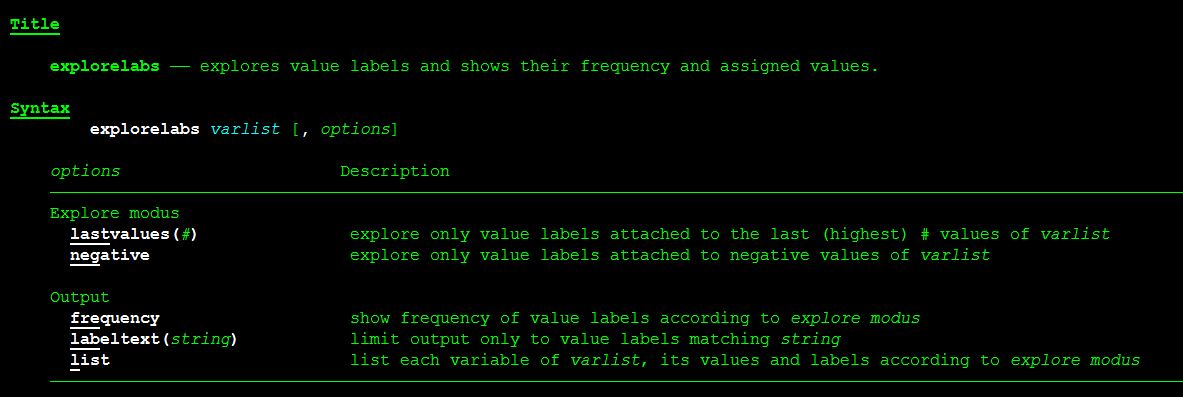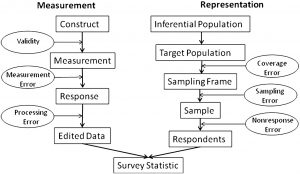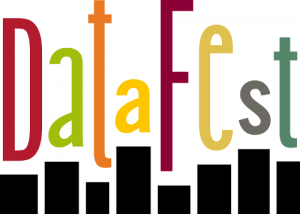TU Berlin, 1./2. Juni 2017
(Anmeldung bis zum 25.05.2017)
Die quantitative Survey‐Forschung zielt auf eine möglichst beobachterunabhängige Beschreibung sozialer Phänomene ab. Gegenüber der qualitativen Sozialforschung beansprucht sie den Vorzug einer durch große Zufallsstichproben und Standardisierung gegebenen Verallgemeinerbarkeit sowie Vergleichbarkeit von Ergebnissen aus verschiedenen Kontexten. Im Unterschied zu prozessproduzierten Massendaten bzw. ‐akten (etwa staatlichen Verwaltungsdaten und Big Data), wird der Vorzug der theoriegeleiteten Datenerhebung und ‐auswahl betont. Seit den Anfängen der sozialwissenschaftlichen Surveyforschung war die Standardisierung des Forschungsprozesses mit dem Streben nach wissenschaftlicher Objektivität verbunden. Noch heute arbeiten die großen internationalen Forschungsinstitute primär auf der Grundlage von standardisierten Befragungen.
In Vergessenheit geriet im Zuge der erfolgreichen Institutionalisierung der Survey‐Forschung jedoch, dass diese selbst als sozialer Prozess verstanden werden kann. Aus organisations‐ und marktsoziologischer Perspektive erscheint Survey‐Forschung – erstens – als ein Markt, in dem Projekte in komplexen, arbeitsteiligen, transorganisationalen Produktionsketten umgesetzt werden. Die soziale Logik der Herstellung von Wissen beschränkt sich dabei nicht auf die kommerzielle Markt‐ und Meinungsforschung, sondern liegt auch nationalen wie kulturvergleichenden Studien wie ISSP, EVS, ESS, dem World Value Survey usw. zugrunde. In die Wissensproduktion durch die empirische Sozialforschung sind – zweitens – verschiedene soziale Felder (Bourdieu), Konventionen (Ökonomie der Konventionen) und Wissensordnungen (Wissenssoziologie) involviert, die ihren je spezifischen Bewertungsmaßstäben Geltung verschaffen und dadurch konstitutiv für die Prozesse und Produkte der empirischen Sozialforschung sind. Obschon die Legitimation fragebogenbasierter empirischer Sozialforschung sich auf Objektivitäts‐ und Neutralitätspostulaten gründet, wirken ihre Befunde – drittens – auf mannigfaltige Weise in die Gesellschaft zurück. Dieser Zusammenhang von Statistik und Herrschaft ist in die Gründungsgeschichte der Sozialforschung eingeschrieben, wie es Desrosières in seinen historischen Arbeiten oder Boltanski und Thévenot am Beispiel von Berufsklassifikationen aufzuzeigen vermochten.
Dieser Workshop setzt sich zum Ziel, die komplexen Produktionsgefüge fragebogenbasierter Sozialforschung, ihren performativen Charakter und ihre gesellschaftlichen Implikationen kritisch zu reflektieren. Es gilt dabei, Instrumente, Prozesse und Resultate genauer zu betrachten und die für gewöhnlich vernachlässigten Anwendungsbedingungen und Produktionsprinzipien der Survey‐Forschung als dem vermeintlich wissenschaftlich‐neutralen Königsweg soziologischer Methodik offenzulegen. Der Workshop richtet so insgesamt den Fokus auf die Survey‐Forschung als sozialen Prozess. Aus wirtschafts‐ und organisationssoziologischer Perspektive soll etwa thematisiert werden, welche Konventionen die synchrone und diachrone Koordination der Survey‐Produktionskette strukturieren. Aus wissen(schaft)ssoziologischer Perspektive soll die Frage adressiert werden, wie sich der soziale Prozess der Survey‐Forschung in Verfahren, Datenqualität, Messergebnisse und Interpretationen niederschlägt und so hintergründig an der Wissensproduktion konstitutiv beteiligt ist. In herrschaftssoziologischer Absicht soll dann die Frage aufgeworfen werden, wie die empirische Sozialforschung an der Herstellung und Aufrechterhaltung der sozialen Wirklichkeit und der Gesellschaft mitwirkt. Aus methodologischer Perspektive stellt sich schließlich die Frage, inwiefern dieser soziale Prozess der Survey‐Forschung im Alltagshandeln der Forschenden selbst reflektiert werden kann, um den Forschungsprozess zu verbessern und dessen Grenzen aufzuzeigen.
Organisation
Caroline Näther, Andreas Schmitz, Raphael Vogel, Alice Barth und Nina Baur
Kontakt
survey@mes.tu‐berlin.de oder sekretariat@mes.tu‐berlin.de
Anmeldung
Zwecks Planung wird um Voranmeldung bis zum 25.05.2017 gebeten.
Programm
Donnerstag, 1. Juni 2017, 13–18.30 Uhr
13.10–14 Uhr
Willkommen, Registrierung und Snacks
14–14.45 Uhr
Begrüßung und Einleitung: Interpretativität und Survey‐Forschung (Nina Baur)
I. Wissen, Praktiken und Konventionen der Survey‐Forschung
15–15.45 Uhr
Beurteilung der Qualität von Survey‐Daten (Jörg Blasius, Universität Bonn)
16–16.45 Uhr
Konstruktäquivalenz und Inhaltsvalidität als besondere Herausforderung in der kulturvergleichenden Forschung (Wolfgang Aschauer, Universität Salzburg)
17–17.45 Uhr
Funktionale Äquivalenz in der interkulturellen Survey‐Forschung –
am Beispiel der Methodenäquivalenz (Martin Weichbold, Universität Salzburg)
18–18.30 Uhr
Abschlussdiskussion des Tag 1 (Moderation: Caroline Näther)
ca. 19 oder 19.30 Uhr
Abendessen im Mar y Sol (Tapas und Spanisches Essen, Savignyplatz 5, 10623 Berlin)
Freitag, 2. Juni 2017, 9–18 Uhr
II. Organisation von Survey‐Forschung
9.30–10 Uhr
Kaffee
10–10.45 Uhr
Die Entscheidung zur Befragungsteilnahme aus der Perspektive soziologischer
Handlungstheorie(n) (Michael Weinhardt, Universität Bielefeld)
11–11.45 Uhr
Surveys als Bestandteil einer Nationalen Forschungsdaten‐Infrastruktur (Stefan Liebig, Universität Bielefeld)
12–12.45 Uhr
Das Hinterland der schweizerischen Survey‐Landschaft. Auf Qualitätskonventionen gestützte Übersetzungs‐ und Koordinationsprozesse entlang der Quality Convention Chain von Surveys (Caroline Näther, Universität Luzern)
12.45–14.30 Uhr
Mittagspause im Manjurani (Indisches Restaurant, Knesebeckstraße 4, 10623 Berlin)
14.30–15.15 Uhr
Die Einbettung von Surveys in Survey‐Welten (Raphael Vogel, Universität Luzern)
III. Macht und Kultur in der Survey‐Forschung
15.30–16.15 Uhr
Prozesse und Mechanismen von Vertrauens‐ und Korruptionskulturen (Peter Graeff, Universität Kiel)
16.30–17.15 Uhr
Meinungsumfrage als ideologische Konsumption – eine feldtheoretische Perspektive (Alice Barth und Andreas Schmitz, Universität Bonn)
17.30 – 18.30 Uhr
Abschlussdiskussion (Moderation: Nina Baur)
19 Uhr
Gemeinsames Abendessen im Restaurantschiff Capt’n Schillow
(Straße des 17. Juni 113)
Ort
Berlin – Institut für Soziologie – Fraunhoferstraße 33‐36 ‐ Raum: FH 919 – 10587 Berlin
Anfahrtsbeschreibung
http://www.soz.tu‐berlin.de/menue/kontakt/ sowie http://fahrinfo.bvg.de
Empfohlene Hotels in der Nähe des Veranstaltungsorts
- Hotel Otto in der Knesebeckstraße (Entfernung: 750 m, 10 min zu Fuß)
- Hotel Indigo Berlin Ku’damm in der Hardenbergstraße (Entfernung: 1 km, 12 Min zu Fuß/Buslinie 245 oder M45: Einstieg: Jebensstr., Ausstieg: Marchstraße, ca. 15 Min)
- Novum Style Hotel Berlin‐Centrum in der Franklinstraße (Entfernung: 850 m, 11 Min zu Fuß/Buslinie 245: Einstieg: Franklinstr., Ausstieg: Marchstraße, ca. 15 Min)
- Hotel Tiergarten Berlin in Alt‐Moabit (Entfernung: 2,2 km/Buslinie 245: Einsttieg: Turmstraße, Ausstieg: Marchstraße, ca. 20 Min)
- Motel One Tiergarten (Entfernung: ca. 3 km, U2: Einstieg: Wittenbergplatz, Ausstieg: Ernst‐Reuter‐Platz, ca. 10 Min)
- Motel One Ku’Damm (Entfernung: 1,5 km, Buslinie 245 oder M45: Einstieg: Jebensstr., Ausstieg: Marchstr., ca. 15 Min)
- Motel One Hauptbahnhof (Entfernung: ca. 4 km, Buslinie 245: Einstieg: Lesser‐Ury‐Weg, Ausstieg: Marchstraße)



